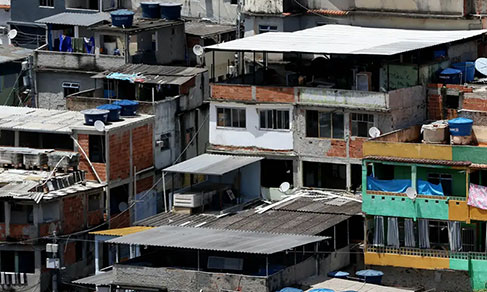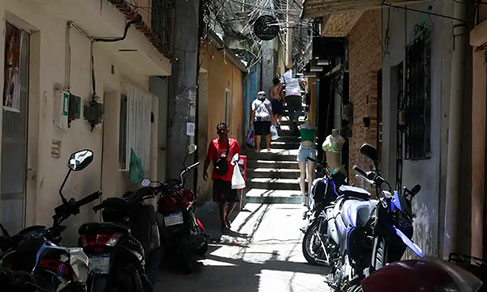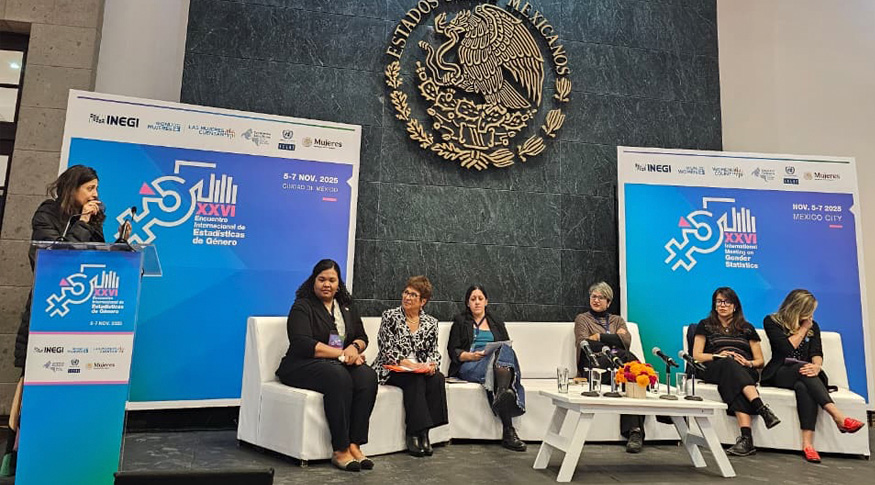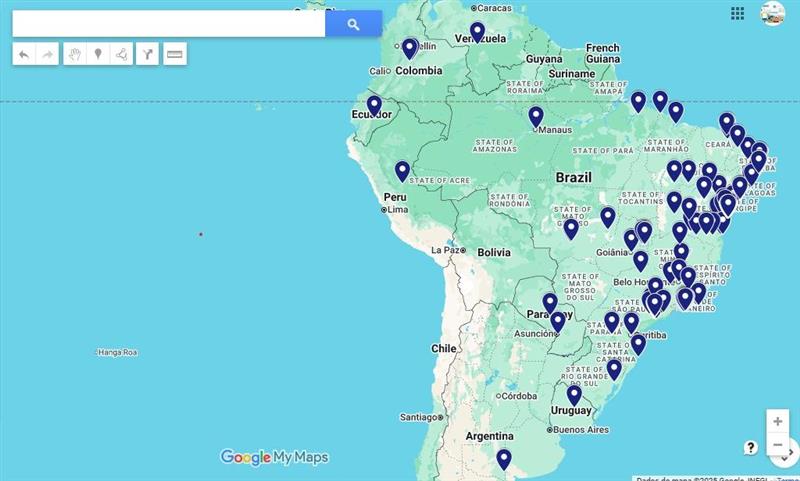Profile of States and Municipalities
In 2021, just 19 municipalities reported not having confirmed cases of Covid-19
December 08, 2022 10h00 AM | Last Updated: December 15, 2022 02h17 PM
Highlights
- Altogether, 5,549 (99.6%) Brazilian municipalities reported clinically or laboratory confirmed cases of COVID-19 in 2021. Only 19 reported no confirmed cases;
- There was an increase compared to 2020, when there were 5,449 (97.8%);
- The installation of screening tents was carried out in 3,704 (66.8%), an increase compared to 2020, when there were 3,065 (56.2%);
- Regarding those who had the number of beds expanded, the proportion was lower in 2021 (57.5%) compared to 2020 (58.2%);
- The need for hospitalization also increased from 2020 to 2021. Among the municipalities with cases, 99.4% (5,517) reported the need for hospitalization, against 93.8% 5,109 in the previous year;
- Of the 5,517 who declared that there was a need for hospitalization of people who had COVID-19, 5,468 (96.1%) reported the occurrence of death, against 88.8% in the previous year;
- More than 90% of the municipalities had an exclusive health department in 2021;
- In 2021, 891 municipalities (16%) reported having a total of 4,194 outsourced public health facilities;
- According to ESTADIC 2021, 21 UFs (or 77.8%) reported having at least one public establishment managed by third parties.
- According to Munic 2021, 99% of municipalities have a Family Health strategy;
- The number of Family Health teams grew by 5.9%, from 44,742 in 2018 to 47,365 in 2021. Among municipalities with more than 500,000 inhabitants, however, there was a reduction of -3.2% (-289 teams) .
- The number of community health agents was reduced by 3,452 agents (-1.3%).
- The HIV and syphilis test in pregnant women was present in more than 94.8% of the municipalities in 2021. The heel prick test was present in 91.1%, while male/partner prenatal care did not reach half of the municipalities in the country (45.1%).
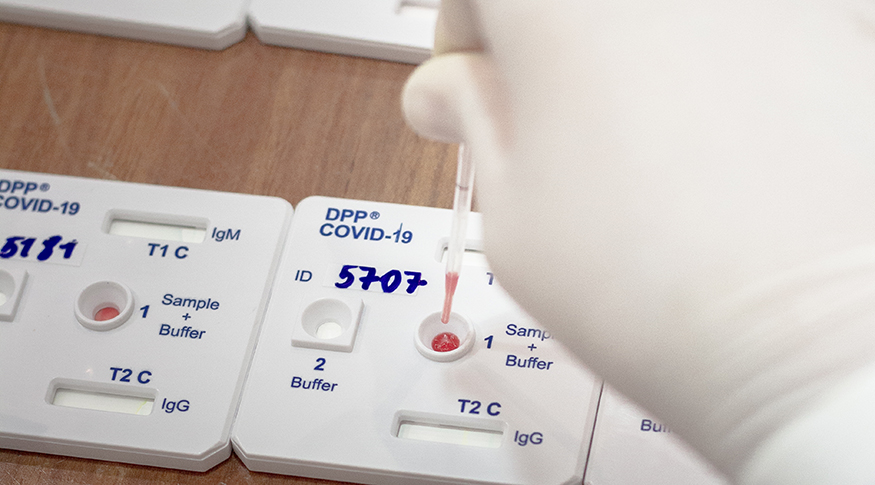 More than 99% of the Brazilian municipalities reproted confirmed cases of Covid-19 in 2021 - Photo: Raquel Portugal/Fiocruz
More than 99% of the Brazilian municipalities reproted confirmed cases of Covid-19 in 2021 - Photo: Raquel Portugal/Fiocruz99.6% of Brazilian municipalities reported clinically or laboratory confirmed cases of COVID-19 in 2021, which corresponds to 5,549. Only 19 municipalities reported not having had confirmed cases. Of these, almost half (9) have a population of up to 5,000 inhabitants. In 2020, there were 5,449 municipalities (97.8%) with confirmed cases.
These numbers are in the Survey of Basic Municipal Information (Munic), released today (08) by the IBGE, together with the Survey of Basic State Information (Estadic). It should be noted that two municipalities have not answered Munic: Porto de Moz (PA) and São José (SC).
The year 2021 was the second of the pandemic, marked by the emergence of new variants of the SARS-CoV-2 virus and by more than 400,000 deaths, according to the National Council of Health Secretariats (Conass). However, it was also the year of the start and advance of vaccination, and in which more municipalities took measures to try and stop Covid. "From the portrait of Munic, comparing 2020 and 2021, the latter had a greater number of municipalities affected", says Vania Pacheco, survey analyst.
Of the 5,549 municipalities with confirmed cases in the year, the study shows that screening tents were installed in 3,704 (66.8%), an increase compared to 2020, when there were 3,065 (56.2%). However, with regard to those who had the number of beds expanded, the proportion was lower in 2021 (57.5%) compared to 2020 (58.2%). Those that had a field hospital installed, the number remained at the same level in both years (12.3%).
The need for hospitalization also increased from 2020 to 2021. Among the municipalities with cases, 99.4% (5,517) reported the need for hospitalization, against 93.8% (5,109) in the previous year. Another number that increased was that of municipalities where the number of hospitalizations exceeded the capacity of public or private intensive care beds and units (ICUs) affiliated with the SUS: from 23.6% to 48.1% in 2021.
Among those who reported the need to keep people for more than 24 hours in outpatient units, the increase was from 39.1% to 51.9%. In addition, there was also an increase in the proportion of those who reported the need to refer patients (transfer to another municipality for procedures). In 2020, they were 91.6% and, in 2021, the percentage increased to 95.8%.
The number of municipalities that claimed to have registered deaths from COVID-19 also increased from 2020 to 2021. Of the 5,517 that declared that there was a need for hospitalization of people who had COVID-19, 5,468 (96.1%) reported the occurrence of death, against 88.8% of the previous year.
More than 90% of municipalities had an exclusive health department in 2021
Munic also collected data to monitor aspects of public health management in Brazilian municipalities. One of the issues concerns management structures. In 2021, 91.7% of the municipalities had a health department dedicated to the area, the same level as the previous year. Only 8.3% (or 461 municipalities) had other management structures and two declared that they did not have a municipal management structure for the area.
The growth over the last 12 years draws attention: in 2009, the number was 82.5%. The structures in municipalities with up to 5,000 inhabitants contributed to this increase, whose percentages increased from 67.8% in 2009 to 84.6% in 2021. ON the other hand, municipalities with up to 500,000 inhabitants reached the percentage of 98%.
Ms. Pacheco claims that it is not possible to guarantee that exclusive secretariats improve health management. “Of course there is a tendency to imagine that having a manager gives greater importance to the issue, but that is not a fact. Having a shared Secretariat is not necessarily a disadvantage, it can facilitate and integrate the management of public policies, for example", says the analyst. "Policy management depends a lot on the manager who is in charge of the municipality in the period”, she concludes.
In 2021, there were 4,194 outsourced municipal health facilities
A health service management model that has been increasingly used at all levels of public management is outsourcing. “There are several motives and evaluations for this model. However, there are still many doubts about the motivations involved in this process”, ponders the analyst.
In recent years, there has been a large increase in municipalities that claim to adopt some type of outsourcing in health facilities under their responsibility. In 2018, there were 685 (12.3%), totaling 3,013 outsourced establishments. In 2021, it went to 891 municipalities (16%) and 4,194 outsourced establishments, in 2021. Outsourcing was concentrated in the Southeast Region, where 26% of the municipalities had establishments under their responsibility managed by third parties. In the North and Northeast Regions, the percentages were lower, 5.8% and 9.9%, respectively.
Estadic also carried out this survey for Federation Units (UF) and 21 FUs (or 77.8%) reórted that they had at least one public establishment managed by third parties. Six states (Roraima, Tocantins, Rio Grande do Norte, Paraíba, Minas Gerais and Mato Grosso) stated that they did not have any establishments with this type of management.
Among the FUs that contracted management services for public health facilities, the type of administrator most present were the Social Organizations (OS), present in 15 FUs (Amazonas, Pará, Amapá, Maranhão, Ceará, Pernambuco, Alagoas, Bahia, Espírito Santo , Rio de Janeiro, São Paulo, Santa Catarina, Mato Grosso do Sul, Goiás and the Federal District).
99% of the municipalities have Family Health services, but there was a reduction of 289 teams in those with more than 500 thousand inhabitants
The Munic 2021 questionnaire also asks about basic care/primary health care items, which are based on Family Health. According to the survey, this strategy was present in 5,516 municipalities, practically all municipalities (99%). Of the 54 who said they did not have a Family Health program, 27 reported having another equivalent strategy. Only three reported none.
The number of Family Health teams grew by 5.9%, from 44,742 in 2018 to 47,365 in 2021. This increase, however, was not recorded in all municipalities. Among those with more than 500,000 inhabitants, there was a reduction of 3.2% (-289 teams). The number of community health agents was reduced by 3,452 agents (-1.3%).
Within this theme, Munic evaluated the existence and distribution of some policies, programs and/or actions in the health area. A highlight was the HIV and syphilis test in pregnant women, present in more than 94.8% of the municipalities. The heel prick test was present in 91.1% of the municipalities, while male/partner prenatal care did not reach half, remaining in 45.1%.
More about MUNIC and ESTADIC
The Surveys of Basic Municipal and Basic State Information (MUNIC and ESTADIC) provide information on the structure, dynamics and functioning of municipal and state public institutions. In 2020, in addition to the topics Human Resources, Manager Profile, Law and planning instruments, Education, Culture, Sport and Health, Munic brings some pages on the COVID-19 pandemic, providing information on the municipalities affected by the coronavirus and the actions carried out by municipal administrations to minimize the impacts of the disease. At Estadic, the topics investigated were: Human Resources, Education, Culture, Sports and Health.


